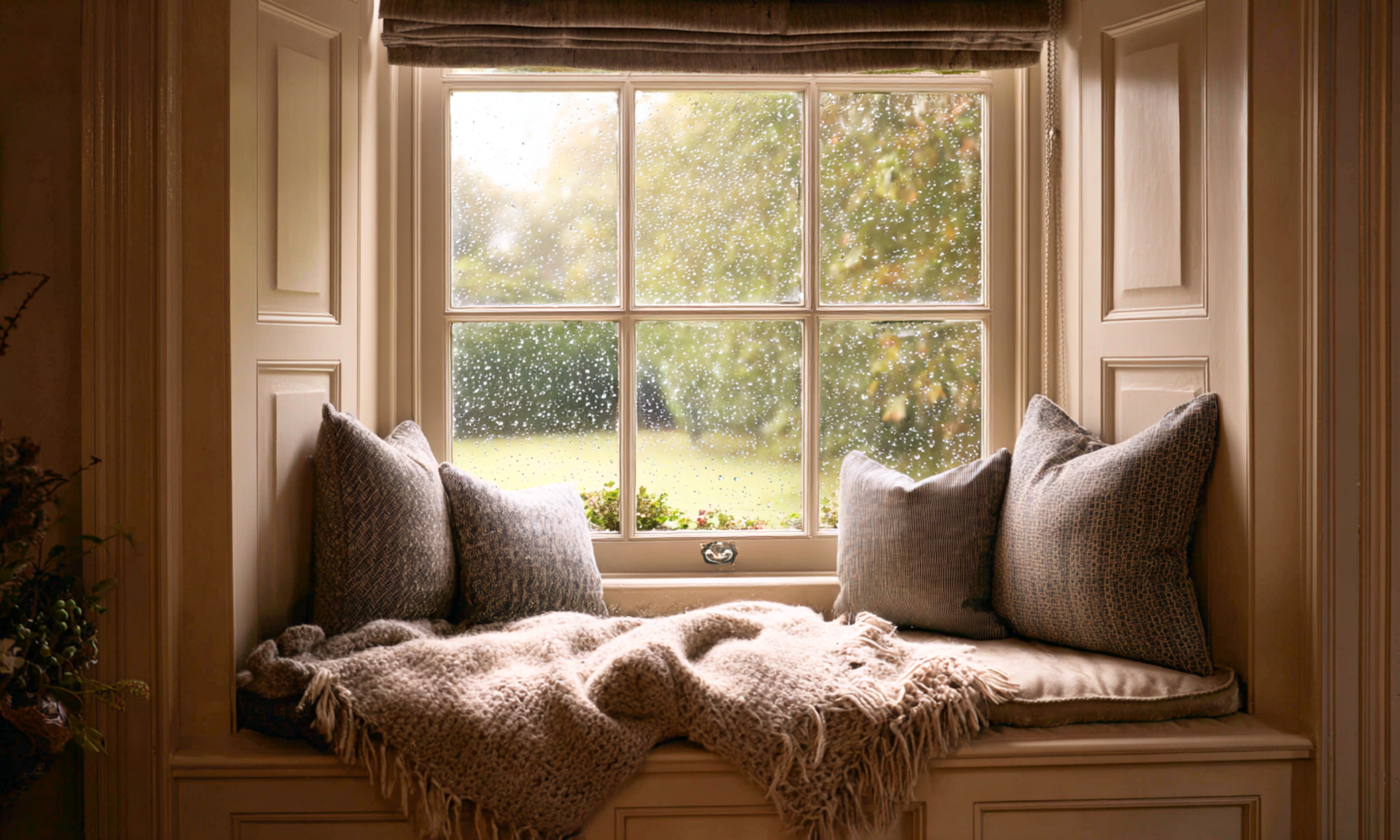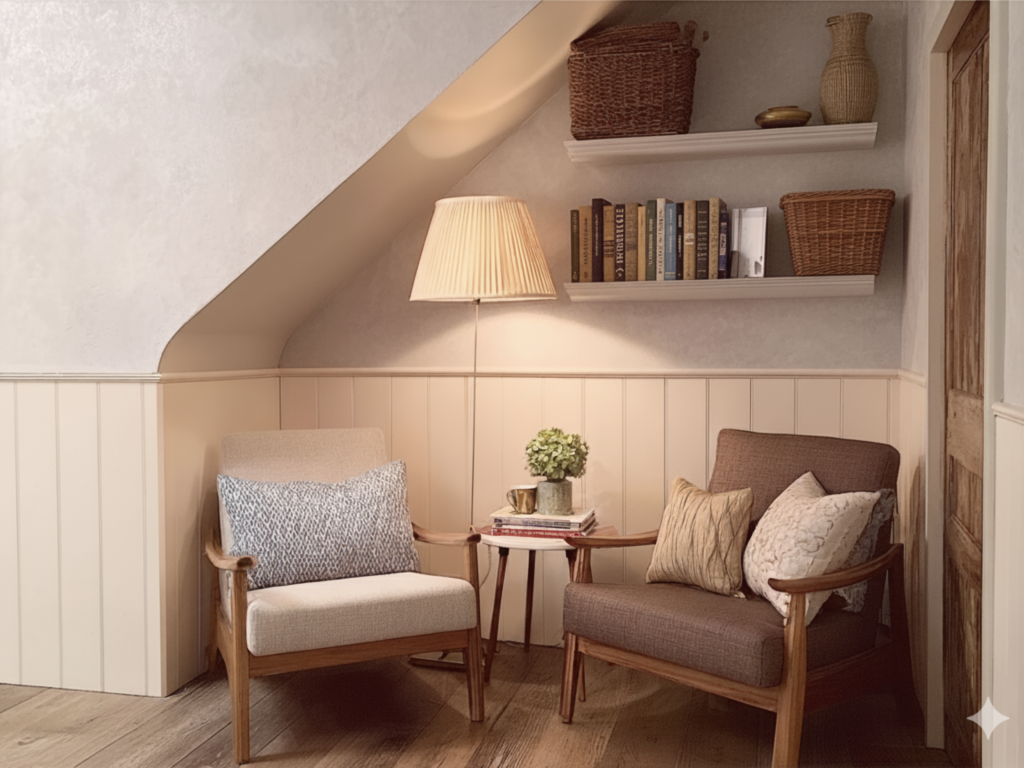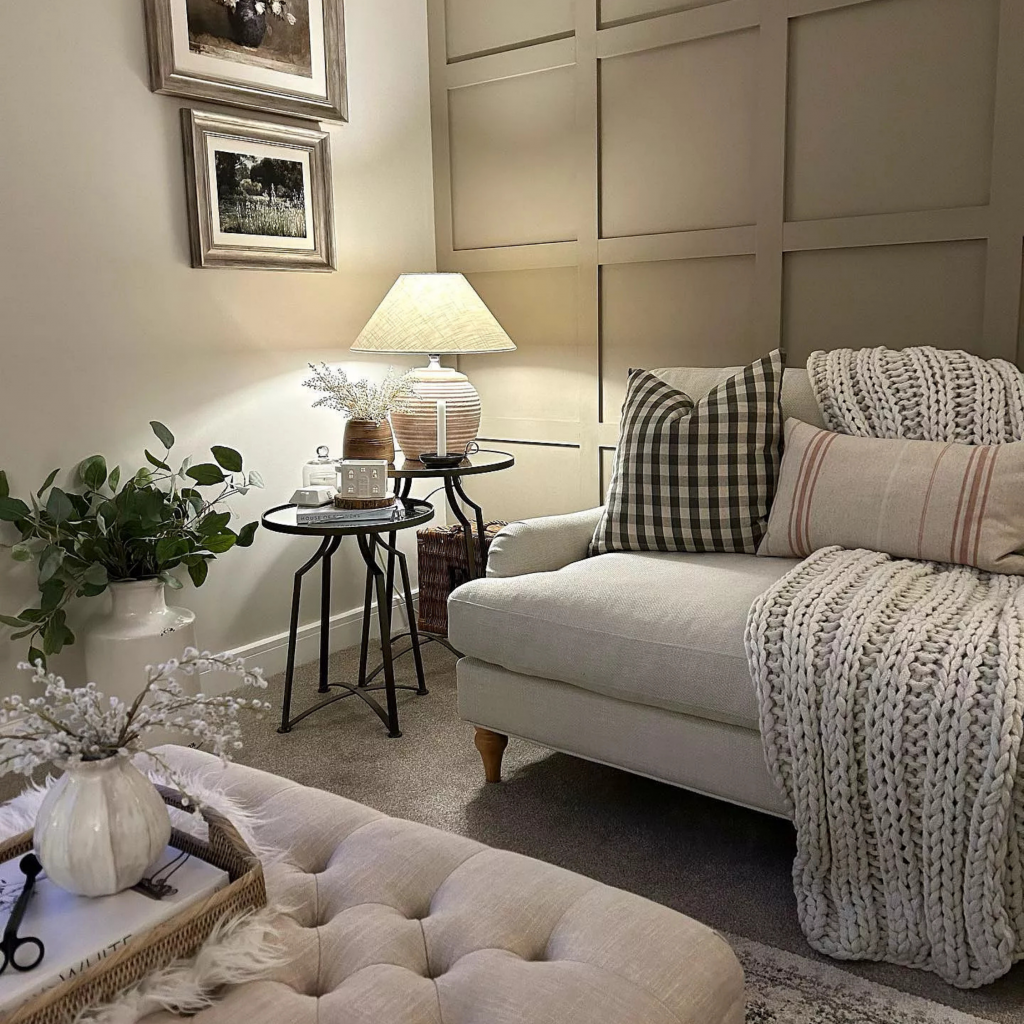
Grounded Elegance: Designing with Kindness & Humanity
These feel like difficult and uncertain times – everyone I know is worried about the economy, or our chaotic politics, the legacy we’re leaving for our kids, or the environment, and mental health… it goes on and on.
When the pandemic forced us all to stay inside, many of us realised how much our homes shape our wellbeing – how frustrating it feels when they don’t serve us, and how restorative they can be when they do. I feel like we’re back in those times, needing community, connection and calm. And that is central to what I consider ‘good design’.
Many of us might say that good design should meld form and function. But more recently I’ve been thinking of design along the lines of ‘kindess’, ‘connection’ and ‘growth’. For me it’s about understanding what makes people feel safe, inspired, and themselves – and designing around that. While design can be visually impressive, the most successful spaces work on an emotional and sensory level – they make you feel settled, comfortable, and able to be yourself (hopefully on a good day!) That is the essence of my aesthetic, which I’ve called Grounded Elegance: rooted in natural materials, classic proportions and a calm sense of ease.
It’s not a style you can buy off the shelf. It’s an attitude to living. But the ideas below on how you could decorate, light and furnish your home will certainly help you bring this aesthetic to your own space – creating a place that invites you to slow down, take off your shoes, and feel a sense of belonging.
A Home That Grounds You
A grounded interior begins with kindness. Kindness is about heartfelt choices which prioritise people over perfection. It doesn’t try too hard or chase trends. Instead, it draws on the tactile and the familiar. Materials play a big part in that – the silkiness of timber under your fingertips, the fine texture of a linen weave, the coolness of stone under bare feet. These sensory cues quietly anchor us, they create a sense of calm because they connect us to the natural world and to the passage of time. They are also wipeable and washable, because kindness is not about preciousness.

A dark hall becomes a cosy reading nook – or perhaps for an evening whiskey and a catch-up on the day.
Lighting plays a major role in how welcoming a home feels – and creates connection. Harsh overhead lighting flattens a space, while layered lighting brings it to life. Try combining soft wall or picture lights, floor lamps, and table lamps to create pools of warmth. It’s these light ‘pools’ that bring people together – just think of the draw of a glowing open fire. You can create a similar ‘come hither’ space for your family, or just yourself, by softly lighting a reading nook or a couple of cosy armchairs. As I always say, dimmer switches are key – you might want brighter light for reading a book, but softer if you’re scrolling online pages, so give yourself the option of both. Similarly pop a table lamp on a side table to make a dark corner feel welcoming and inhabited—it’s often these understated pockets of light that make a room feel like home. And with the number of portable, rechargeable lamps available now (including these by Pooky), you don’t need to call in an electrician.
Elegance That Elevates Without Intimidating
Elegance doesn’t have to mean formality. It’s found in proportion, restraint, and detail – the grain of a vintage mahogany desk, the curve of a bronze cabinet handle. Consider an oval dining table with upholstered chairs that encourage conversation long after dessert is finished. When furniture is solid and comfortable, it creates refinement that feels lived-in rather than precious. It’s definitely not about some of the brutalist, blocky solid wood dining chairs I’ve seen in magazines recently – my glutes start to numb just looking at those.
Performance upholstery fabrics and natural blends are ideal for family homes—soft enough to touch, yet durable enough to withstand real life. Look for cotton-linen mixes, slubby weaves, and washable velvets. I’d chose washable over stain-resistant finishes due to the toxic chemicals within these.

Kindness is a chunky knitted throw and ‘come squish me’ cushions. Image courtesy of Dusk.com
The Human Thread in Design
Design that prioritises people rather than perfection always feels warmer. Before rearranging a room, think about how you move through it: where you could pause, play, or gather. Could a reading chair catch the morning light? Would a bench against the kitchen wall provide a place to chat while cooking? These small human gestures shape how a space is experienced.
Colour also has emotional weight. A palette of natural neutrals with pockets of richer tones – muddy reds, soft blues, olive greens – creates both harmony and depth. Choose colours that reflect how you want to feel in the room, not just how you want it to look. I cover this in more detail in the second post of my Confidence with Colour series.
Final thoughts:
Living with Grounded Elegance: Home as an Anchor
A home built on Grounded Elegance evolves with you, welcomes wear, adapts to changing routines, and improves with age. In a world that often feels unstable, a home like this becomes an anchor – somewhere steady when everything else seems uncertain.
Homes age, families shift, priorities evolve – and so should design. It’s why I take time to get to know clients beyond their colour preferences or furniture wish lists. I want to understand their rituals, the small moments that make them feel most themselves. Those moments are where the best design begins.
It’s not about perfection. It’s about living gracefully and celebrating imperfections – creating homes that support you now, and still feel like you, two decades later.
Categories: DecoratingLighting
jenny@kitedowncreative.com
07740 292 015
East Meon in Hampshire, GU32 1PD